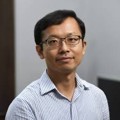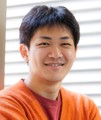


"Enabling Techniques for Volumetric Velocity Measurements: from Self-calibration, Iterative Particle Reconstruction to Object Registration"
Volumetric flow measurement techniques have made significant progress in the last decades starting with 3D-PTV, holographic PIV, scanning PIV and the advent of Tomographic PIV in 2005, for the first time enabling the analysis of densely seeded flows. It soon became obvious that the requirements for accurate pointing and calibration functions would be rarely met based on the mechanical and optical precision of the available hardware. Misalignments up to several pixels would hamper the application of MART-reconstruction in Tomo-PIV unless brought down to a fraction of a pixel. Several aspects of the volumetric self-calibration (VSC) technique are presented, from its principle, to the application in correcting small or large disparities, for steady or unsteady errors to handle vibrations, and optical distortions. Determination of the optical transfer function (OTF) enables measurements with less sharply controlled imaging conditions. All those aspects and others have paved the way to the subsequent development of a high seeding-density iterative particle reconstruction (IPR), at the basis of the Lagrangian particle tracking (LPT) in the form of Shake-the-Box algorithm (STB) introduced by the DLR-Göttingen group in 2013. Relatively recent developments deal with including the geometrical features of objects usually present in a flow field experiment. Blending ray-tracing and object registration techniques as used in machine vision and IPR, it now allows the measurement around complex objects even when moving or changing shape. The focus of the talk will be on the train of ideas leading to the current state of volumetric techniques, and how those ideas originated in the historical context.
Bio:
Bernhard Wieneke graduated 1983 in astrophysics with a MSC from Rice University, Texas. He joined LaVision GmbH in 1989 developing software and hardware for optical measurement systems, in particular for flow diagnostics and surface deformation systems (DIC). He has been working on 2D- and Stereo-PIV, 3D-PTV, Tomographic PIV and Shake-the-Box. He participated in many German and European research projects and PIV challenges. In 2009 he has been appointed CEO of LaVision, in 2017 he received a PhD from TU-Delft and officially retired in 2024, now continuing as a consultant.

"Diving into a Sea of Data: Lagrangian Tracking of Polydispersed Bubbles in Intense Turbulence"
Traditional Lagrangian methods have primarily focused on tracking monodispersed tracers. However, in complex multiphase flows, the challenge often involves more complex objects, such as finite-sized bubbles and droplets, which follow polydispersed size distributions due to fragmentation and coalescence processes. These complexities present significant technical challenges. The standard approach of segmenting objects first and then tracking their center of mass, performed a posteriori, often fails in high-density image scenarios where overlapping and merging bubbles lead to inaccurate and incomplete segmentation. To overcome these limitations, we propose a novel method that integrates Lagrangian tracking with image correlation techniques. This approach enables efficient and accurate tracking of polydispersed objects, even in complex flows with high object image densities. Our method allows us to resolve the entire bubble coalescence process, including the microscopic film drainage in complex turbulence, unveiling unexpected physics that classical models could not predict. This advancement paves the way for new models of coalescence dynamics in intense turbulence, which is crucial to a wide range of multiphase flow applications.
Bio:
Rui Ni is an Associate Professor in Mechanical Engineering at Johns Hopkins University and was appointed as the DOE ORISE professor in 2019. Prior to joining JHU, he was the endowed Kenneth K. Kuo Early Career Professor at Penn State University. He received his Ph.D. in the Department of Physics from the Chinese University of Hong Kong in 2011, and worked as a postdoctoral scholar at Yale and Wesleyan University. He received an NSF CAREER award in fluid dynamics, ICMF Andrea Prosperetti award, ACS-PRF New Investigator Award, and NASA Early Stage Investigation award. His primary research focus is the development of advanced experimental methods for understanding multiphase flows in many multiphase flow applications, such as bubble dynamics in turbulence, particle ingestion in gas turbines, landings on extraterrestrial bodies, and dust mitigation for future space exploration.

"Active Turbulence in Bacterial Suspensions: Emergent Vortex Lattice, Reversals and Chirality"
Groups of interacting self-propelled particles, such as flocks of birds, cultured cells, swimming bacteria, and active colloids, often exhibit self-organization into complex flows and patterns. These systems composed of nonequilibrium ‘molecules’ can be regarded as single objects, termed active matter, and their universal properties have been sought from the viewpoint of statistical physics. A particular example is bacterial suspensions at high density, where swimming bacteria form spatiotemporally chaotic flows and vortices, called active turbulence, even at low Reynolds numbers. In contrast to conventional Navier-Stokes turbulence, active turbulence, occurring for essentially zero Reynolds numbers, is characterized by the well-defined characteristic length scale. The existence of the typical vortex size allows transforming bacterial motion into stable vortex arrays under geometrical confinements or in the presence of obstacles.
In this talk, after general introductions to active matter physics and active turbulence, we first elaborate our experiments on the self-organizations of bacterial active turbulence into stable vortical structures in microscopic pillar arrays. We experimentally inferred the boundary conditions and incorporated them into a continuum description of the bulk unconstrained active turbulence. This numerical scheme with these boundary conditions has successfully reproduced the emergent macroscopic vortex order and the topology of the flow field around a pillar observed in the experiments. Next, by combining large-scale experiments, computer modeling, and analytical theory, we have uncovered the basic instability mechanism that destabilize the vortical order, leading to a reversing vortex pair and then a pulsating four-vortex state. This mechanism characterizes a universal route to well-developed active turbulence. Our findings provide insights into how geometrical confinements orchestrate spatiotemporal organization in a broad class of active systems. Furthermore, our recent study shows that even the chirality of vortices may be controlled by experimentally modifying the boundary conditions. The controls and rectification of vortices in confined active matter may open up new possibilities for engineering and utilizing active matter for e.g. mixing at the microscale.
Bio:
Daiki Nishiguchi is currently an Associate Professor at Department of Physics, Institute of Science Tokyo (formerly, Tokyo Tech). He earned his Ph.D. in physics from The University of Tokyo in 2017, and then pursued postdoctoral research in biophysics at CEA-Saclay and Pasteur Institute in Paris, France. He was appointed as an Assistant Professor at The University of Tokyo in 2019 before starting his current position in 2024. He enjoys a variety of active matter experiments, from bacterial suspensions and cultured cells to artificial swimming colloids, with a particular focus on uncovering their universal laws and their ways of life. He has a keen interest in science communication and has been involved in diverse outreach activities. He received the Young Scientist Award of the Physical Society of Japan (2020). For more detailed information, please visit:
https://sites.google.com/site/daikinishiguchi/home-english/